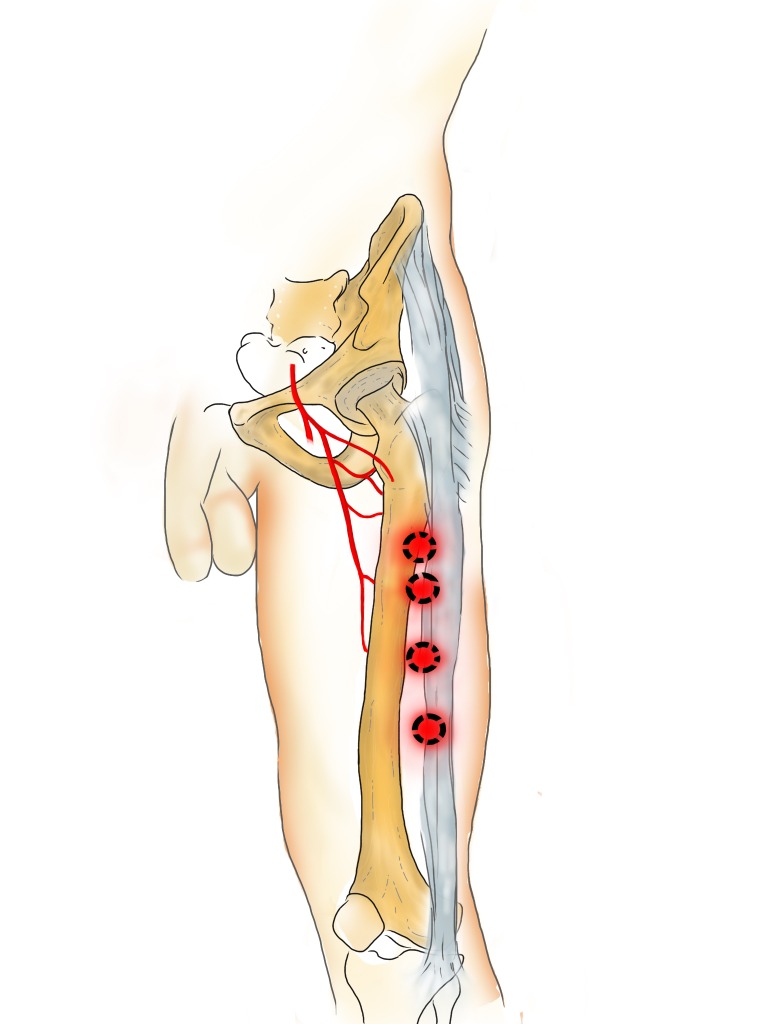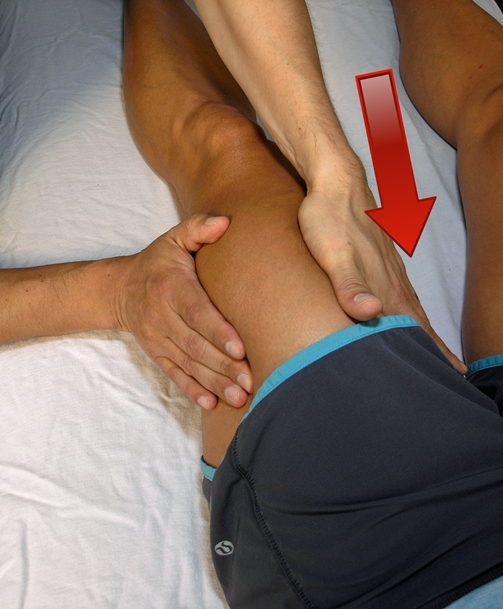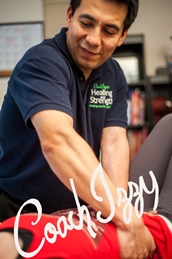(Watch Video First. Turn Captions (CC) On)
The Nuts and Bolts of Strain-Counterstrain
For all the mind-blowing results that Strain-Counterstrain delivers—at a rapid rate and without teeth-clenching discomfort—one would think the system addresses phantasmal aspects of our physiology. This seems even more daunting when exposed to the magnificence of the more recently developed Fascial-Counterstrain, where releasing a structure in the ankle could dampen years of cervical pain.

One would conjure images of obscure knowledge available only to a secret cadre gathered in catacombs filled with voluminous manuscripts. One would think that understanding the nuts and bolts of Strain-Counterstrain requires defiance to science and dwelling into the realms of the esoteric.
But reality is far from the aforementioned. The beauty of Strain-Counterstrain resides in its simplicity and straightforward approach based on one universal principle:
Follow the direction of ease
As long as that universal principle is obeyed results are consistent. This applies to both the classic model of Strain-Counterstrain as originally developed by Doctor Larry Jones, and the revolutionary Fascial-Counterstrain method developed by Brian Tuckey, PT, JSCCI, OCS.
Yet let us not make the mistake of oversimplification. While the application of Counterstrain is straight forward, it’s never random. The skilled practitioner makes it appear second nature but every manipulation has a specific purpose.
The proficient Counterstrainer must be a master of anatomy and anatomical interactions at a level that astounds seasoned health professionals.
Knowing muscular structures and actions is no longer enough. One must become well acquainted with veins, arteries, nerves (in their many systemic divisions), visceral lining and ligaments, lymphatic channels, and dural tube layers among others. It’s that understanding that guides the sequence of treatment and the success of the therapy. The essence of Counterstrain may be simple, but the topics that must be mastered to arrive there are expansive and clash with mainstream beliefs.
Don’t believe me? What if I told you that treating hypertonic muscles is only treating symptoms? That stretching goes against the protective mechanisms of our bodies? That trying to exercise a dysfunction makes it—more often than not—worse?
I know—I’m throwing a lot on your plate. Perhaps you’d like a definition, something that you could present to your health providers or loved ones. We can start by asking:
What is Strain-Counterstrain?
We all love definitions. They make our lives easier by giving us a pre-digested view that can be shared in a friendly format. Definitions can be useful but they can also be abused and misapplied and Strain-Counterstrain is no exception.
Trying to define something so simple to apply yet so expansive to master is quite the task. Many have made the mistake of relegating it to the area of muscular dysfunction, which Doctor Lawrence Jones never said it was.
Personally, I’m a big believer in simplification but not to the point where it becomes destructive to the essence of the concept. Heck, I witness daily what oversimplification has done to the world of health and fitness. Who hasn’t heard even highly educated professionals still preach that you need to burn 3,500 kilocalories to shed one pound of fat? I rest my case.
Just saying that we should follow the direction of ease may be too vague. Yet putting it in the terminology used for health professionals may be overwhelming. I’ve included two definitions in this post: One of my own that I use every day in my practice, and the one created by Brian Tuckey himself when he communicates with health professionals.
I’ll start with my own definition, inspired by those from whom I’ve learned about the amazing world of Counterstrain:
“Strain-Counterstrain is a system of gentle but precise manipulation of the soft tissues responsible for creating dysfunctions via protective reflex arcs. The objective is to shut-off these reflex arcs by recognizing their manifestations and working in cooperation with the symptoms they create.”
That may sound like a mouthful but the following example may help grasp the concept. Let’s take the common complaint of a tight IT Band.
In my experience, the problem rarely comes from the IT Band itself. More often than not, it’s protective reflex arcs in the lateral perforating arteries. By their location, it’s easy to see why they can tighten the IT Band—the created symptoms. The red dots represent the location of some of the common tender points created by dysfunction in this structure, the ones the therapy world loves to crush with foam rollers or other brutalities. Eek!

The soft tissue I’m going to manipulate to shut-off the reflex arcs is the most outer fascial layer of the lateral perforating arteries—the tunica adventitia. I will do so indirectly via glides in the inner thigh area.
I will monitor this through the changes in the tender points created in the outer quadriceps—the recognized manifestation—and shorten the structure in the direction of ease (toward the origin of the lateral perforating arteries) thus working in cooperation with the symptoms they create.

Simple enough, but not overkill simplification.
Now, if you’re looking for a more detailed concept that you can share with your health care providers, Brian Tuckey’s definition is unbeatable:
“Fascial Strain and Counterstrain Technique is a skilled, passive manipulation of the body’s deep fascial proprioceptors with the goal of normalizing associated nociceptive and nociautonomic reflexes that maintain spinal cord sensitization. The observable clinical effects include: decreased nociception, decreased inflammation, improved flexibility, improved proprioception, normalization of muscle tone, and improved functional performance.”
Brian’s definition is one that satisfies the health governing bodies—and insurance carriers. I’m certain that you might have noticed Brian mentioned deep fascial proprioceptors in his definition. This means the organelles monitoring the deeper layers of fascia for changes in length and mechanical tension—the heart of protective reflex arcs. Thus, to better appreciate the world of Counterstrain, we must first learn to understand the crucial role of fascia.
And that, friends, is the topic of this next post.
Until next time, may you enjoy a fit and pain-free life!
Coach Izzy
Brian Tuckey, PT, OC, JSCCI

